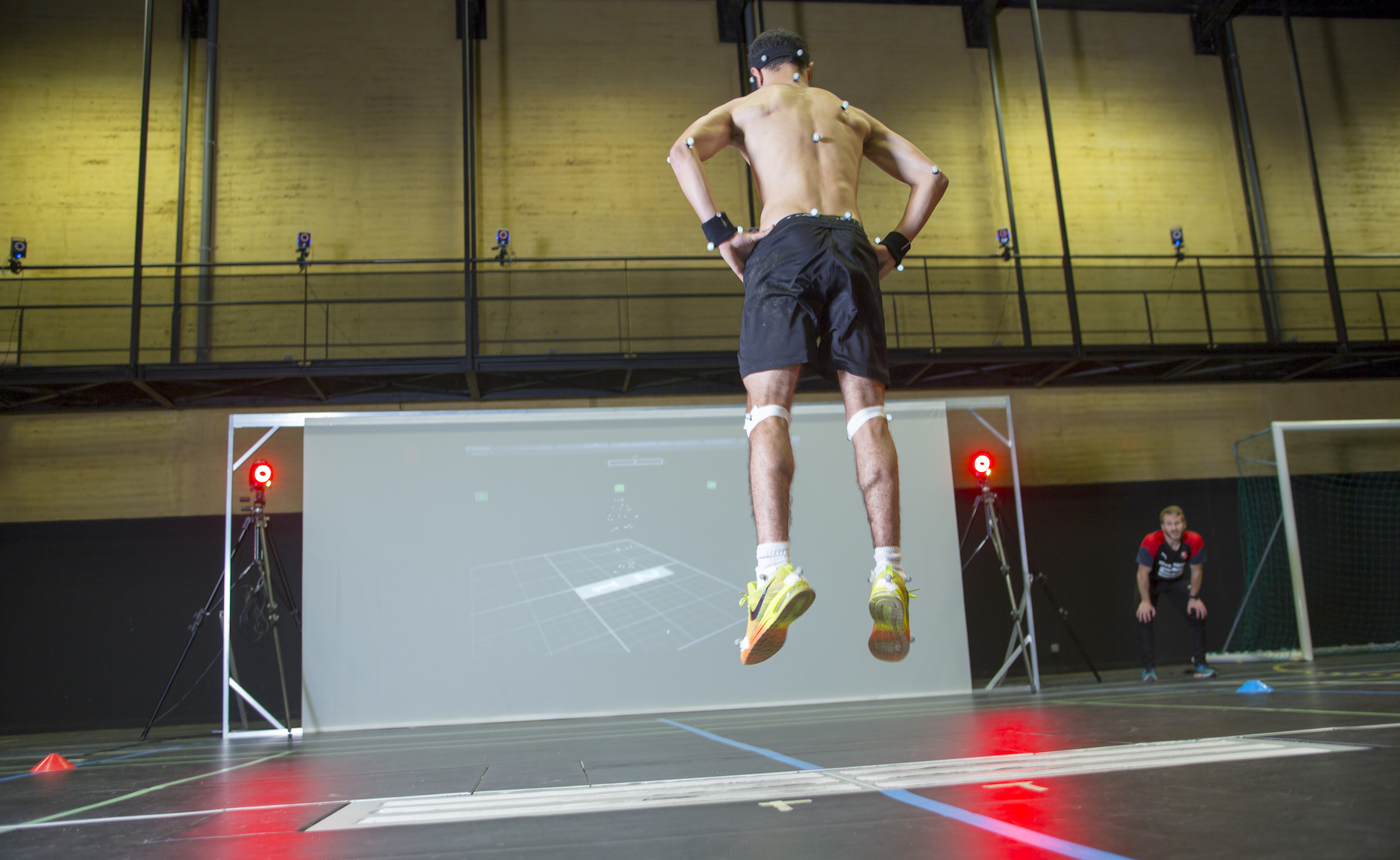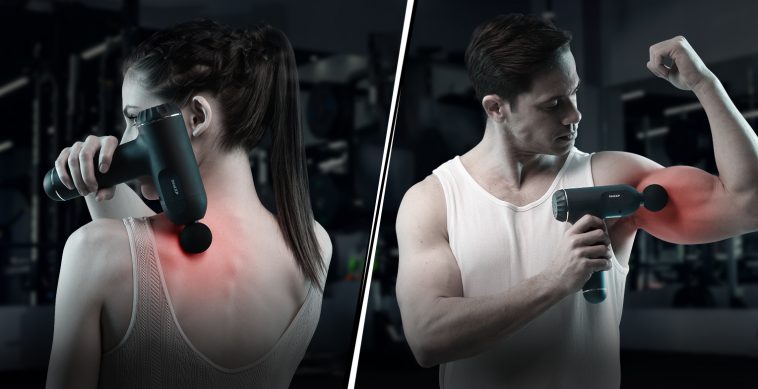Sports & Fitness
128 Advancements in Modern Sports Medicine, Technology, and Rehab
Zachary Schult; Lucas Miller; and David Hess
Introduction:
Advancements in sports medicine, technology, and rehabilitation have transformed the way athletes prepare, perform, and recover. Innovations in injury treatment, performance monitoring, and recovery strategies have extended the careers of professional athletes and raised the overall standards of athletic achievement. These developments have been driven by interdisciplinary collaboration across biomechanics, physiology, engineering, and data science fields. In this chapter, we will explore how new medical procedures, emerging technologies, and advanced rehabilitation methods have reshaped the athletic experience, enabling athletes to maximize their potential and redefine the limits of human performance.

Connection to STS:
In this chapter, we’ll discover how science and technology have helped change the perspective of athletes and their playing careers. We’ll delve into specific examples of new medicine, game-changing technology, and advanced rehabilitation procedures, all used to boost performance. These developments not only influence individual athletic performance but also transform the broader cultural and social impact of sports. Sports play a large role in society, by connecting cities and fans through wanting to win. Having athletes that can perform at higher levels for longer periods of time help create a more connected fanbase and an overall positive impact to society. Athletes today are celebrated not just for their natural talents, but for their ability to harness science and technology to push the boundaries of human achievement.
Medicine:
Recent innovations in sports medicine have been aimed at improving diagnosis, treatment, and recovery from injuries. Interdisciplinary research has advanced the repair of complex injuries, such as rotator cuff tears, spinal issues, and ligament injuries, with improved surgical techniques and novel materials for repairs (Sun, 2023). Biomarkers are also used as predictors for outcomes in surgery, like spinal fusions, providing more personalized recovery plans (Sun, 2023). For injuries like rotator cuff tears, modern treatments include using suture anchors with biologically enhanced materials, which have shown improved recovery outcomes. For ligament injuries, such as ACL tears, modern methods use advanced techniques that preserve ligament attachment points to reduce long-term cartilage degeneration (Sun, 2023). Multiple athletes have undergone torn ligaments and have made full recoveries, including Jamal Murray, who tore his ACL in 2021. However, through advanced recovery methods, he was able to help his team win an NBA championship just over a year later. Minimally invasive procedures like arthroscopic surgery have allowed for faster recovery and reduced trauma to surrounding tissues. Functional rehabilitation protocols that emphasize sport-specific movements early in recovery have also become widely adopted (Fu, 2020). These advances, along with interdisciplinary care teams that include physicians, therapists, and nutritionists, reflect the evolving integration of science and athlete care (Fu, 2020).
Technology:

The role of technology in sports has evolved tremendously in recent history. Especially in modern times, artificial intelligence has created new ways in which athletes can train and perform to better themselves. Examples include the use of VR for realistic training, GPS for tracking movement, and advanced materials in sportswear that improve aerodynamics and comfort (Midha, 2018). Enhanced data-gathering tools are emphasized for providing actionable feedback to athletes and coaches. For virtual reality, Olympians have utilized this technology to help with rehabilitation as well (Midha, 2018). Within the controlled environments, specialized training and real-time feedback helps athletes maintain motivation and improve their recovery process through immersive and sport-specific simulations. In rugby and soccer, GPS tracking is employed to help track statistics and performance during these high-intensity, run-heavy matches (Midha, 2018). The technology can track miles run as well as heart rate and other figures to help analyze overall performance. Wearable technology has also allowed for performance monitoring and injury prevention by tracking movement patterns, muscle load, and physiological stress during activity (Li, 2016). These devices are used to analyze microtrauma accumulation and assist in compliance tracking during rehab protocols (Li, 2016). Biomechanical analytics through wearables can also help develop personalized training plans and detect injury risk through movement inefficiencies and fatigue pattern analysis (Alzahrani, 2024). Newer technologies, such as digital twins, allow for simulated models of athletes’ biomechanics to assist in training decisions (Alzahrani, 2024).
Rehab:
Rehab methods paired with these new medicines and technology have bettered athletes’ performance and training. Some examples of this are incorporation of virtual reality, percussive therapy, biometric analysis, hyperbaric oxygen therapy, robot assisted systems, hydro and cryotherapies, and blood flow restriction variations. Virtual reality and simulation technologies are being used in physical rehabilitation, providing immersive environments for therapy that enhance engagement and adherence (Boccia, 2023). Percussive therapy devices, like the TheraGun, apply targeted vibrations at different rates of speed to increase muscle recovery in less time by promoting blood flow and reducing lactic acid buildup (Boccia, 2023).
Motion capture and biomechanics analysis systems allow for precise correction of movement patterns to prevent re-injury. Some of the motion capture devices being utilized today in baseball can use video imaging systems to simulate specific pitchers a hitter may face during games on any given day, giving major advantages in pitch recognition and outcomes in games even if a player is unable to play due to an injury. These are also used for preventative measures before injury by using biometric analysis to predict areas an athlete may be susceptible to injuries. By doing this, specific training methods may be put in place to keep them healthy and on the field or court for their teams.

Figure 3: Athletes using a percussive therapy device
Hyperbaric Oxygen Therapy (HBOT) is also a way in which new therapy treatments have helped athletes. HBOT helps increase the amount of oxygen in the blood, which helps speed up recovery and treatment (Boccia, 2023). Many athletes have used this method in their recovery techniques and especially as more science comes out supporting its results. Robot-assisted rehabilitation systems, such as gait trainers and exoskeletons, are now also being used to help athletes retrain movement with greater precision and engagement (Banyai, 2024). These systems offer adaptive resistance and real-time feedback to improve neuromuscular recovery and therapy compliance (Banyai, 2024).
A new area of focus has been enhanced recovery methods with cold exposure through cryotherapy (also discussed in Chapter 101) and hydrotherapy. In a recent study, it was found that cryotherapy as a recovery method was highly effective at reducing muscle soreness and improving neuromuscular recovery, while overall reducing the effects of exercise induced muscular damage (Chen, 2024). In the same study, cold hydrotherapy was also found to be effective but not as much as cryotherapy was. Blood flow restriction (BFR) is also being more incorporated to assist with rehab as well as traditional workouts in a weight room. This is done by strapping a cuff tightly on a desired body area, reducing blood flow to a specific extremity and performing a series of movements with this reducing blood flow. After the movements are finished, the cuff is removed and blood rushes into the area. This brings in an abundance of blood and oxygen to the area, which has been shown in some recent studies to accelerate recovery times in athletes (Leszczynski, 2024). There are many conflicting studies and theories around whether BFR enhances muscle growth, but it is widely believed it has a beneficial effect on recovery and allows for high level athletes to perform at their best more frequently.
Missing Voices:
One interesting trend noticed throughout research for this chapter is the dominance of men in studies and examples for sports recovery and technology. A missing voice I’ve noticed is women in this area. This section is a reminder to understand that many resources and ideas can have perspectives that aren’t accounted for. Directly tied to sports medicine, technology, and rehab, women and men vary in numerous ways. According to Sex Differences in Sports Medicine, many biological differences exist that impact concepts directly relating to sports medicine. Differing levels of testosterone, estrogen, and other hormonal effects have shown differences in the way many body parts recover, including tendons, bones, ligaments, and muscles (Casey, 2016). They also go on to say, “Many acute knee injuries such as ACL tears show clear sex-related differences in the incidence of injury as well as injury mechanisms and risk factors” (Casey, 2016). They also mention that understanding these differences can help shape recovery and diagnoses, demonstrating the importance of identifying missing voices within this category of research.
Conclusion:
Advancements in sports medicine, technology, and rehabilitation have significantly transformed the landscape of athletic performance, enabling athletes to compete at higher levels and extend their careers. By using cutting-edge treatments, such as biologically enhanced surgical materials and personalized recovery plans, alongside revolutionary technologies like virtual reality and GPS tracking, athletes can achieve unparalleled levels of precision and efficiency in both recovery and training. Also, rehabilitation tools and techniques, including percussive therapy and HBOT, aid in the vital role of science in maintaining peak physical condition. Finally, understanding the biological differences between men and women has brought more tailored approaches to injury management and recovery, further improving outcomes for all athletes. These advancements not only push the boundaries of individual performance but also foster deeper connections between athletes, fans, and society, demonstrating the connection between science, technology, sports, and society.
References
Alzahrani, A., & Ullah, A. (2024). Advanced biomechanical analytics: Wearable technologies for precision health monitoring in sports performance. Digital Health, 10, 20552076241256745.
Banyai, A. D., & Brișan, C. (2024). Robotics in Physical Rehabilitation: Systematic Review. Healthcare (Basel), 12(17), 1720.
Boccia, G., Calleja-Gonzalez, J., Conte, D., Ferioli, D., Pernigoni, M., & Romagnoli, M (2022). The Application of Recovery Strategies in Basketball: A Worldwide Survey. National Library of Medicine, 13.
Casey, E., Press, J., & Rho, M. (2016). Sex Differences in Sports Medicine. Demos Medical (1).
Fu, F. H., & Lesniak, B. P. (2020). Sports Medicine (2nd ed.). Wolters Kluwer
Li, R. T., Kling, S. R., Salata, M. J., Cupp, S. A., Sheehan, J., & Voos, J. E. (2016). Wearable performance devices in sports medicine. Sports Health, 8(1), 74–78.
Midha, S. S., & Rahela, S. (2018). Technological advancement in sports equipment. Indian Journal of Physical Education, Sports Medicine & Exercise Science, 18(3), 55-62.
Sun, Y., & Chen, J. (2023). Advancements in Sports Medicine. Journal of Clinical Medicine, 12(10).
Chen R, Ma X, Ma X & Cui C (2024). The effects of hydrotherapy and cryotherapy on recovery from acute post-exercise induced muscle damage-a network meta-analysis.. BMC Musculoskeletal Disorders, 25(1), 749. https://dx.doi.org/10.1186/s12891-024-07315-2
Leszczynski S., Gleadhill S. & Bennett H. (2024). The effect of individualised post-exercise blood flow restriction on recovery following strenuous resistance exercise: A randomised controlled trial. Journal of Sports Sciences, J. Sports Sci., 42, 1090-1098. https://doi.org/10.1080/02640414.2024.2383073
Images
Figure 1: “12th Annual ESPY Awards – Show” by Carlo Allegri
Figure 2: “Virtual reality: what role in high-level sport?” by C. Morel
Figure 3: BeatXP. (n.d.). Image of a percussion massager [Photograph]. BeatXP Blog. https://www.beatxp.com/blog/what-is-percussion-therapy-does-it-really-work/
AI Acknowledgement
This chapter was enhanced with the assistance of AI tools to support research, drafting, and editing processes.

